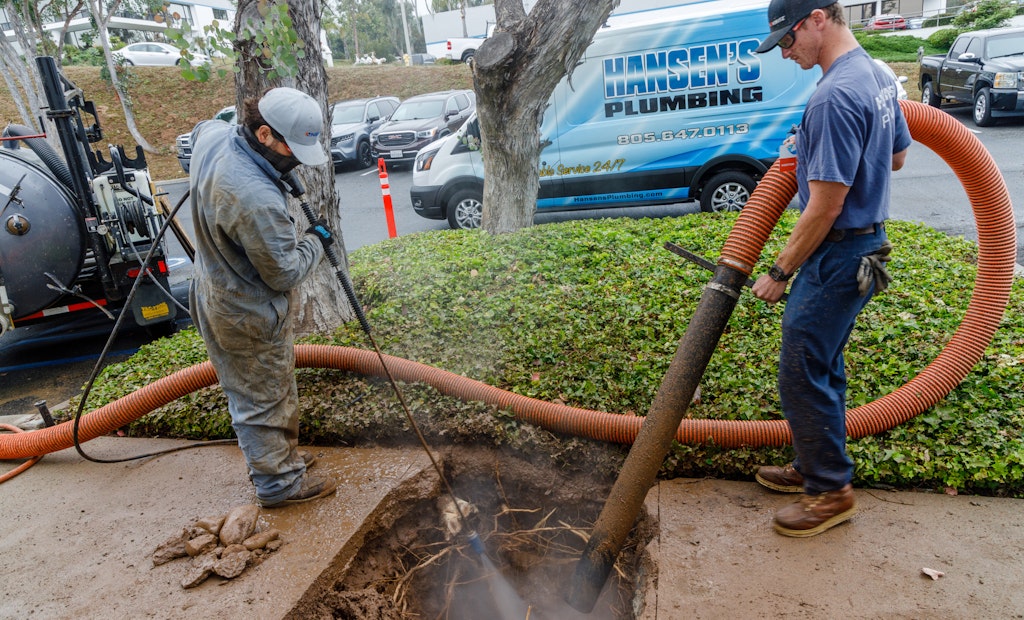Interested in Municipal/Industrial?
Get Municipal/Industrial articles, news and videos right in your inbox! Sign up now.
Municipal/Industrial + Get AlertsWhen Cary Hansen decided to steer his company — Hansen’s Plumbing in Ventura, California — into more lucrative sewer and drain work and depend less on service and repair plumbing, he invested in a Vac-Tron CV SGT trailer-mounted vacuum excavator. (Vac-Tron is a Vermeer MV Solutions brand owned by Vermeer Corp.)
The veteran plumber and drain cleaner’s rationale was simple: The hydroexcavator doesn’t get hurt while excavating pits for pipe bursting or installing new cleanouts, digging trenches for sewer line installations, and exposing underground utility lines.
“We never have to pay workers’ comp for it,” quips Hansen, who established his company in 1987 and employs 12 people, including 10 technicians. “We use the machine whenever we can because it saves our guys’ backs. We can also dig holes faster, which allows us to do more work per week, and the excavations are a lot cleaner and neater, too. With competition getting so crazy these days, this is just another tool we can use to prevent injuries and work more efficiently, which also makes us more competitive.”
Hansen says the machine can dig a 4-by-4-by-4-foot square hole in about two hours, compared to about four hours with a standard excavator (with no utility lines present) or eight hours with two employees digging with shovels.
In addition, using hydroexcavation to expose lines is significantly safer than digging by hand with shovels or with a mini-excavator, Hansen adds.
The only downside to using the machine is spoil disposal. In some instances, Hansen pays a contractor who has enough available space in his equipment yard to spread out the wet spoil and let it dry before taking it to a place that accepts dry soil.
“There’s quite a bit of spoil when we dig, say, two 4-by-4-by-4-foot holes for a pipe bursting job,” Hansen says. “Sometimes we build a big box out of 2-x-6’s on the job site, line it with a plastic tarp and pump the spoil into it, then pay to have it hauled away. You can also put it back in the ground if it isn’t too wet.”
Hansen bought the machine about two years ago for approximately $65,000. But it’s been an invaluable investment, especially given the company’s shift to more sewer and drain work.
“Overall, it’s an amazing machine,” Hansen says. “The guys just absolutely love it and it’s definitely paying for itself.”
Read more about Hansen’s Plumbing in the October 2023 issue of Cleaner magazine.






